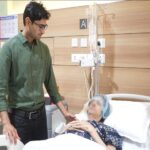India
healthysoch.com
NewDelhi, August 18, 2019 :
The American Heart Association (AHA) has published a new scientific statement on critical limb ischemia. Published online August 12 in the journal Circulation, the statement emphasizes upon the importance of early diagnosis and treatment of critical limb ischemia.
Critical limb ischemia is the most severe form of peripheral artery disease (PAD), which can lead to gangrene and amputations if blood flow is not returned to the limbs.
In the statement, critical limb ischemia has been defined as “the presence of ischemic rest pain, nonhealing wound/ulcer, or gangrene for >2 weeks with associated evidence of hypoperfusion as measured by ankle-brachial index (ABI), ankle pressure, toe-brachial index (TBI), toe systolic pressure, transcutaneous oximetry (TcPo2 ), or skin perfusion pressure (SPP).”
Accurate perfusion assessment is critically important as it not only allows timely revascularization but also reduces unnecessary invasive procedures in patients with adequate blood flow or among those with other causes for ulcers, including venous, neuropathic, or pressure changes.
- The most commonly used perfusion method is the ankle brachial index (ABI); but, it has limited utility in patients with CLI.
- Toe pressure has been suggested as a better predictor of major adverse limb events and tibial disease in patients with CLI, especially among those with isolated below-knee disease.
- Imaging modalities such as computed tomography (CT) angiography, magnetic resonance imaging (MRI) angiography, and duplex ultrasound can accurately measure blood flow in the lower extremities; however, these are only surrogate markers for tissue perfusion.
- Perfusion CT and MRI, specifically arterial spin labeling (ASL) and blood oxygen level–dependent (BOLD) imaging, can better quantify lower-extremity tissue perfusion, although these techniques are not routinely performed for clinical evaluation of PAD.
- Evaluation of regional perfusion and oxygenation is of potential importance for evaluating disease severity and planning revascularization strategy, as well as assessing the benefit of medical therapy or arterial revascularization.
(Circulation, Published online August 12, 2019).
Dr KK Aggarwal , Padma Shri Awardee







